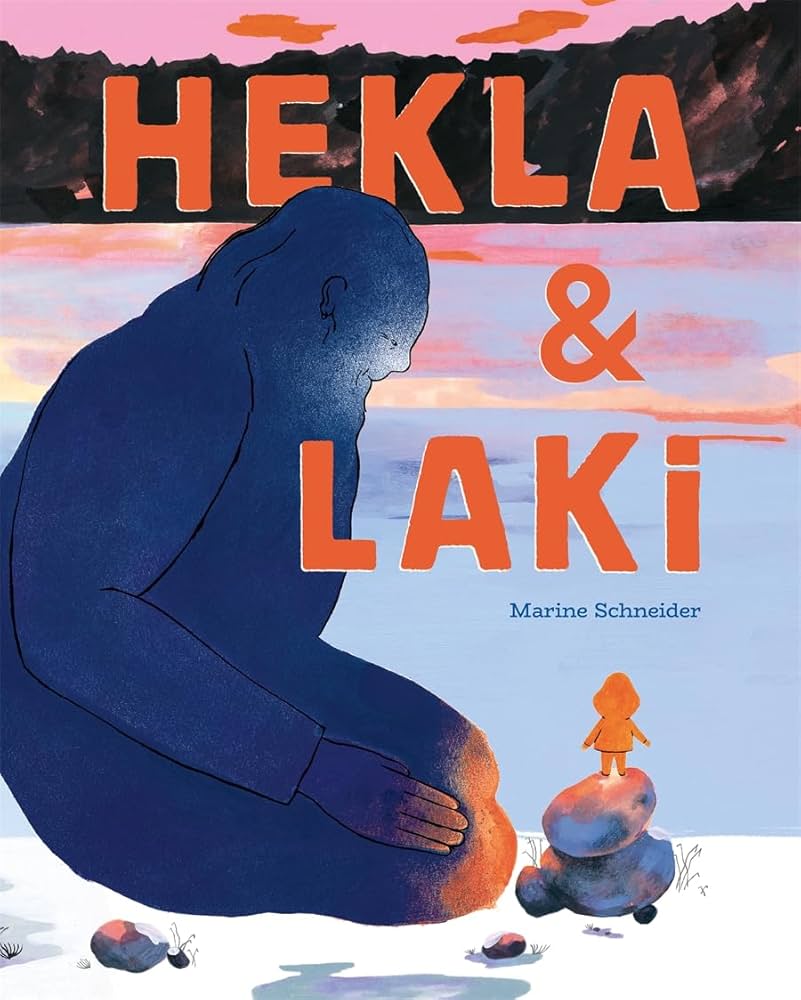Hekla and Laki

Hekla and Laki
Now that Laki was gone, the world didn’t seem as interesting. When the lake was calm, he liked to let the waves sway him gently. On windy days, the waves would toss him about, which scared him a little. But when the surface was perfectly still, he could drift for hours, gazing at the immensity of the sky behind the sharp edges of the crater.
He wondered what the world looked like on the other side.
Translated from French, this story has a folktale quality and was inspired by two Icelandic volcanoes, one active and the other dormant. Some readers will derive a deeper meaning which will enrich their enjoyment and understanding of the story.
In the first part, Laki, an old giant who lives in a crater and is set in his ways, is surprised when Hekla, a small child, arrives in a whirlwind. Laki likes calm and order, but Hekla has a sense of adventure and likes to bring home tiny rocks which he places all around the house and replaces broken and missing objects with floral bouquets. Over many years, the unlikely pair grow fond of each other, with Laki’s becoming more accepting of Hekla’s playful spirit. But Laki grows older while Hekla remains the same. Laki repeatedly warns Hekla to stay away from the lake in the crater’s center, but, one day, Hekla doesn’t listen and dives into the water. This display of independence shows Laki that Hekla no longer needs him and can live without him. Sadly, that night, Laki dies, and Hekla is left alone.
In the second part, Hekla misses his old friend, his world far less interesting now. He spends his time floating on the surface of the lake and wondering what the world looks like on the other side of the crater. One day, a strong wind carries him on a wave to a small piece of land which he claims as his own island. After some time, torrential rainstorms flood the lake, and Hekla’s island begins to float, and, though in the process of the flooding Hekla loses all of his possessions, he discovers several new islands to explore in search of new friends.
The beauty of this story lies in both its lyrical language and in its simplicity. Laki’s and Hekla’s unlikely friendship is endearing, their bond solid. But ultimately, the story is about life, of passing knowledge from one generation to the next, that life is not always easy, and that one can overcome the death of a loved one and still have hope and optimism despite their loved one’s absence.
Illustrations are rendered in inkline, paint and pastels in a limited palette of navy blue, smoky blue and bright orange, symbolic of the characters. The old giant is dark blue and represents the dormant volcano while the young, lively Hekla is bright orange, representing the active volcano. Facial expressions are static, and many of the scenes are similar, leaving the reader to interpret them for themselves. The deeper meaning of the story might be lost on the younger readers in the intended audience while the large book format might be too juvenile for older readers.
In 2022, Hekla and Laki won the “Pépite d’or” award, one of France’s top honours for children’s literature.
Guaranteed to evoke some feelings, Hekla and Laki would make a solid addition to a picture book collection.
Gail Hamilton is a former teacher-librarian in Winnipeg, Manitoba.
